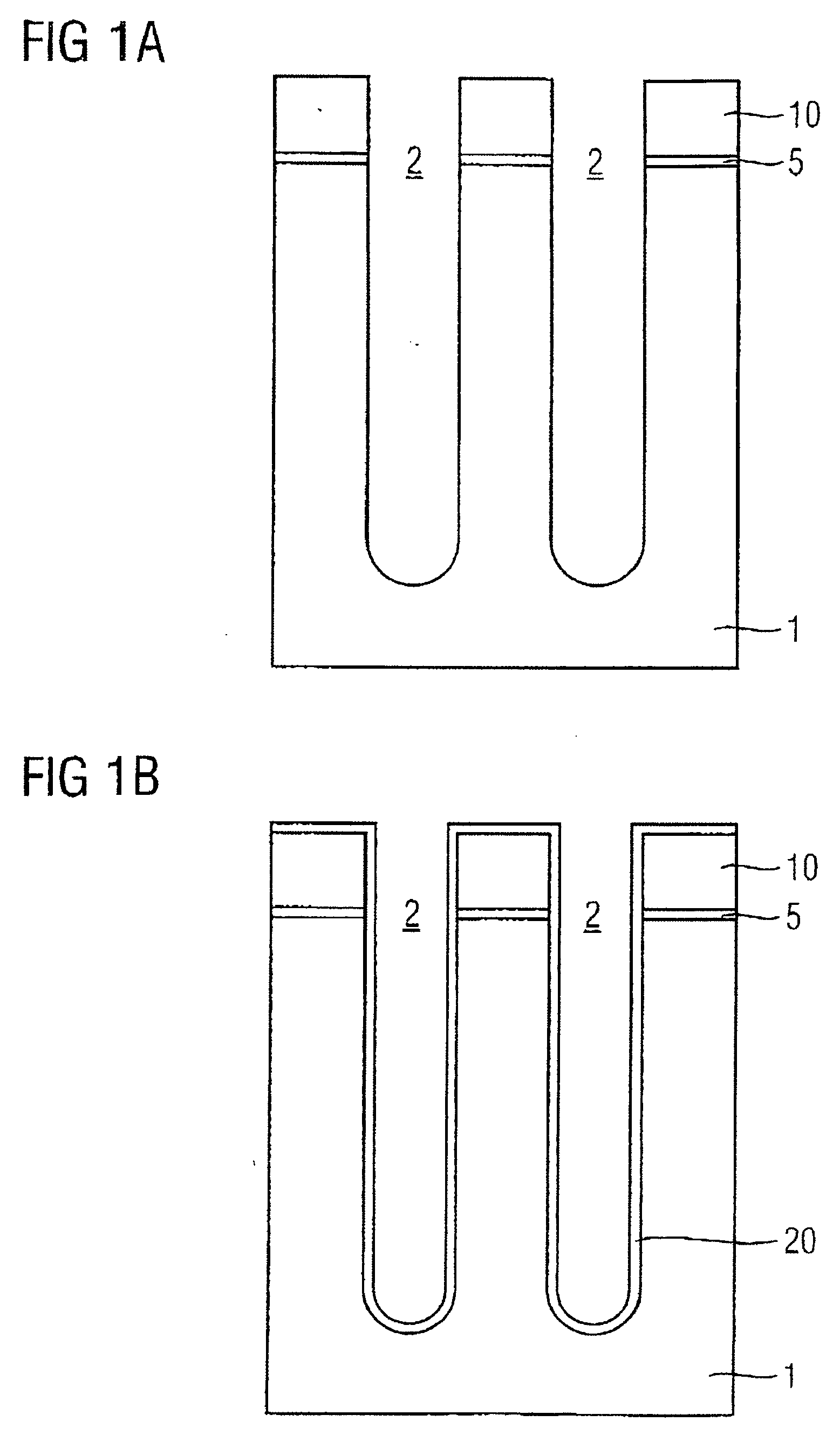Trench capacitor with insulating collar, and appropriate method of fabrication
a technology of insulating collar and clamping capacitor, which is applied in the direction of semiconductor devices, electrical equipment, transistors, etc., can solve the problems of low storage capacity, affecting the operability and usability of memory equipment, and the ratio may be too small to produce an adequate signal, so as to reduce the parasitic capacitance of the space-charge zone, increase the complexity of production, and reduce the resistance of the electrod
- Summary
- Abstract
- Description
- Claims
- Application Information
AI Technical Summary
Benefits of technology
Problems solved by technology
Method used
Image
Examples
first embodiment
[0045] In the case of the present first embodiment, a pad oxide layer 5 and a padnitride layer 10 are first of all deposited on a silicon substrate 1, as shown in FIG. 1a. Next, a further oxide layer (not shown) is deposited and these layers are then patterned using a photoresist mask (likewise not shown) and an appropriate etching method to form a “hard mask”. Using this hard mask, trenches 2 with a typical depth of approximately 1-10 μm are etched into the silicon substrate 1. The topmost oxide layer is then removed in order to arrive at the state shown in FIG. 1a.
[0046] In a subsequent process step, as FIG. 1b shows, arsenic silicate glass (ASG) 20 is deposited on the resultant feature, so that the ASG 20 fully lines the trenches 2, in particular.
[0047] As FIG. 1c shows, the deposition of the ASG layer 20 is followed by the resultant feature being filled with undoped polycrystalline silicon 90, which is subsequently removed by isotropic dry-chemical etching in the upper region ...
second embodiment
[0063] The state shown in FIG. 2a corresponds to the state shown in FIG. 1j, whose previous history has been explained in detail above in connection with the
[0064] In line with FIG. 2b, a film 100 made of a special metal electrode material is subsequently provided, specifically a TiN / TiP stack. This means that there is the advantage of the thermal stability of TiN and the very good conductivity of TiP, for example.
[0065] In this connection, R. Leutenecker et al. describe, in “Microelectronic Engineering”, 37 / 38, pages 397 ff., 1997, deposition of TiN using a CVD method and subsequent annealing of the TiN layer in phosphine at 450° C., forming an upper layer made of titanium phosphide.
[0066] In the next process step, arsenic-doped polysilicon 80 or polysilicon germanium is deposited, which results in the feature shown in FIG. 2c.
[0067] By etching back the polysilicon or polysilicon germanium 80, the feature shown in FIG. 2d is obtained.
[0068] Finally, the metal electrode film 100...
PUM
 Login to View More
Login to View More Abstract
Description
Claims
Application Information
 Login to View More
Login to View More - R&D
- Intellectual Property
- Life Sciences
- Materials
- Tech Scout
- Unparalleled Data Quality
- Higher Quality Content
- 60% Fewer Hallucinations
Browse by: Latest US Patents, China's latest patents, Technical Efficacy Thesaurus, Application Domain, Technology Topic, Popular Technical Reports.
© 2025 PatSnap. All rights reserved.Legal|Privacy policy|Modern Slavery Act Transparency Statement|Sitemap|About US| Contact US: help@patsnap.com



